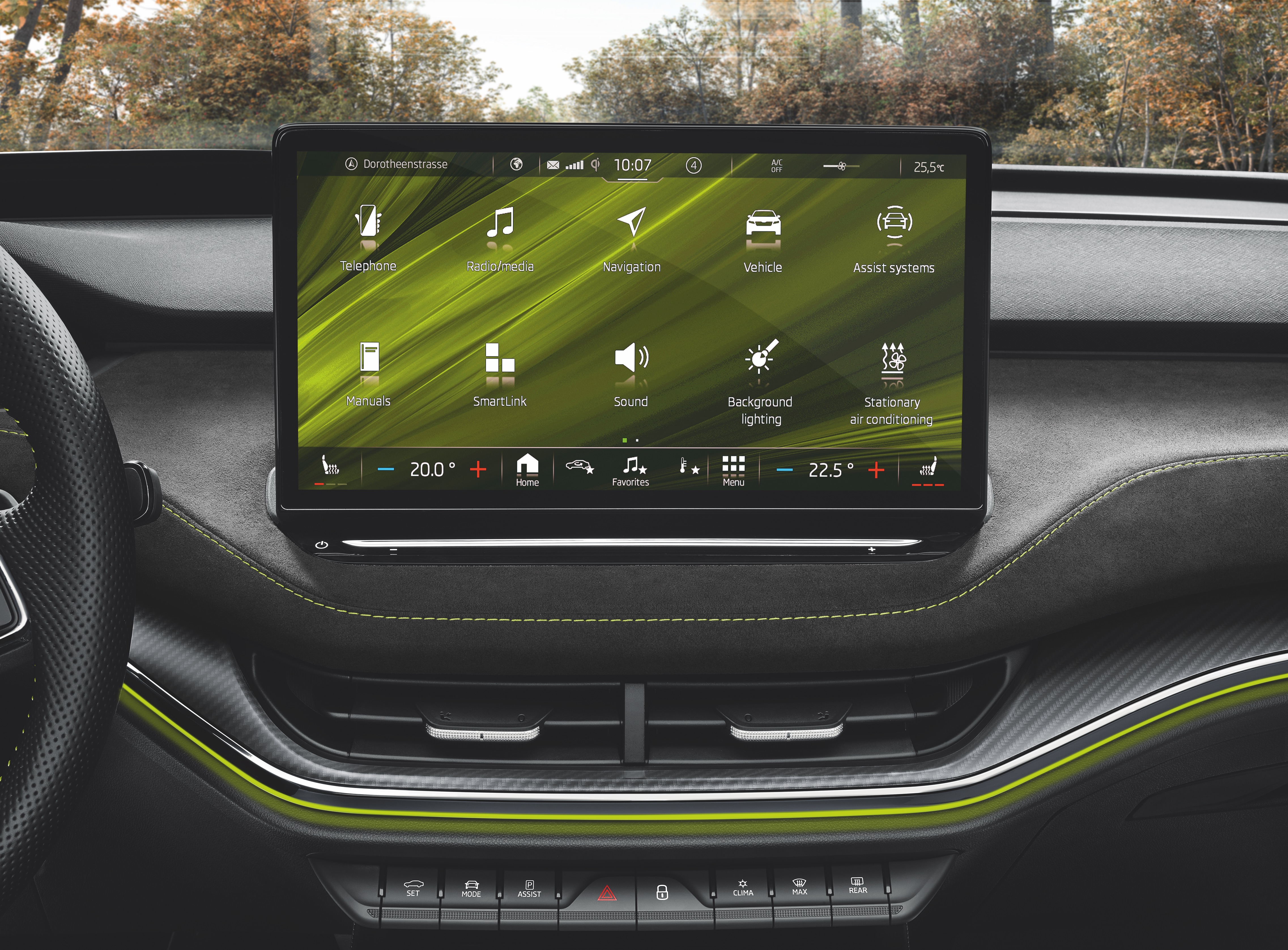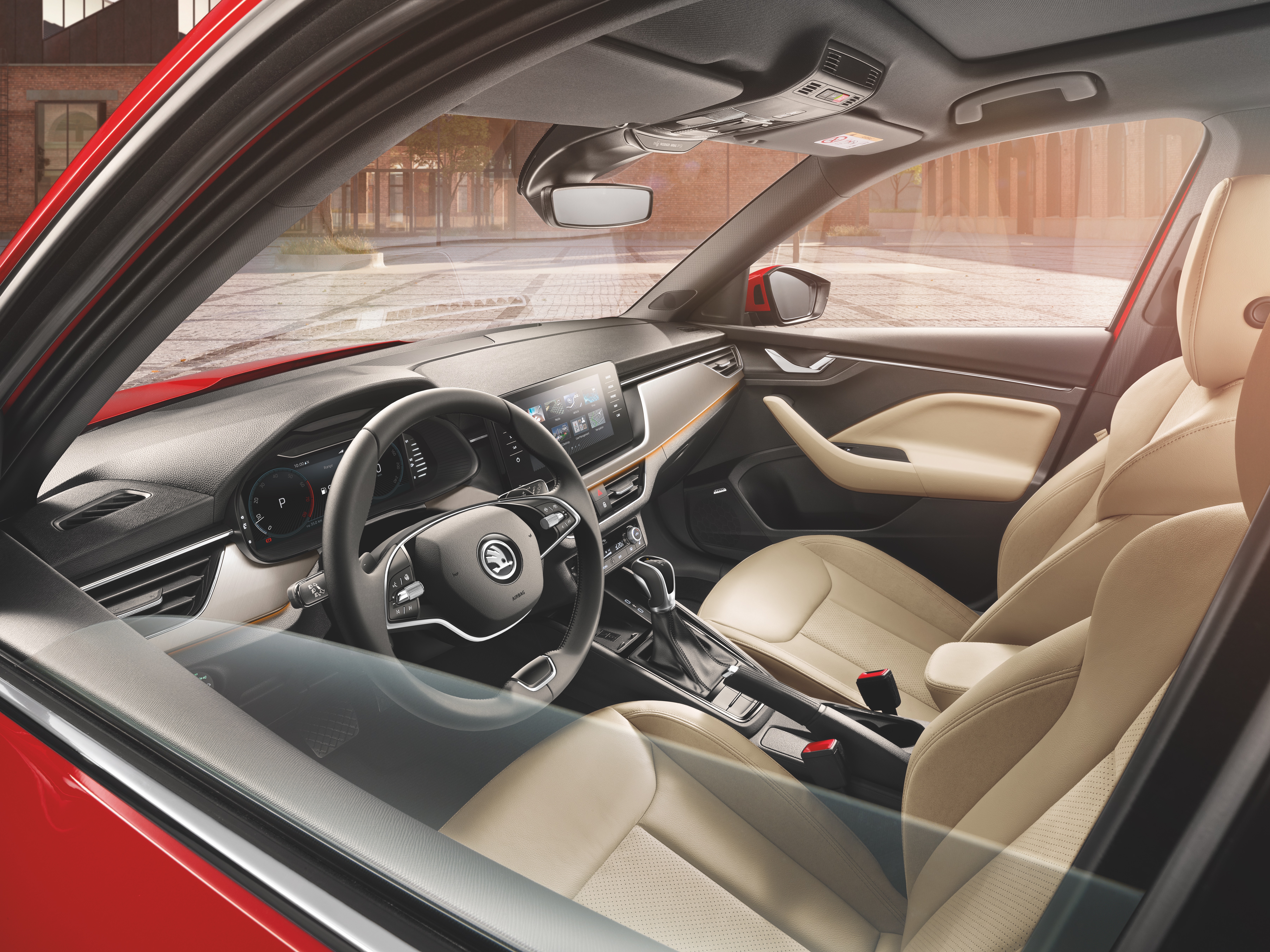Hello, can you hear me?
So far we’ve talked about setting up audio for entertainment, i.e. mostly for enjoying music. But Vlastimil Navrátil and his colleagues also have to deal with other considerations, such as hands-free calls on a connected phone, controlling the voice assistant Laura or the voice assistant on the phone. And last but not least, the emergency call module, which is activated in the event of an accident.
 Laura can be commanded to commence navigation to a specified destination, play music of your choice or write dictated text messages, among other things.
Laura can be commanded to commence navigation to a specified destination, play music of your choice or write dictated text messages, among other things.
These parameters vary depending on the technology used. For each of them, the quality of the audio signal, i.e. speech, is recommended or even required by a standard, and the characteristics are checked during the homologation of the car. The user has the option of using the classic Bluetooth hands-free or the more advanced technologies of Apple CarPlay or Android Auto, where data is transmitted via Wi-Fi or USB cable. “The main difference with the audio setup is that voice applications add another link in our chain: the microphone. Of course, microphones don’t just pick up the speaker’s voice, but all the sounds and noises in the car. Our main task in this area is to process the signal so that unwanted ambient noises and sounds are suppressed while the spoken word is understandable in all circumstances, which is very important in an emergency call, for example, when the car is damaged and the occupants may be injured,” explains Tomáš Choura, who is responsible for voice applications.
 Apple CarPlay and Android Auto, technologies for playing music and other entertainment services, can be found in the ŠKODA ENYAQ iV all-electric SUV as well as other ŠKODA models.
Apple CarPlay and Android Auto, technologies for playing music and other entertainment services, can be found in the ŠKODA ENYAQ iV all-electric SUV as well as other ŠKODA models.
The engineers conduct most of these tests acoustically, though some electric testing is still used. For hands-free, for example, nearly five hundred tests are carried out, measuring the basic parameters of the telephone channel such as level, distortion, frequency characteristics and feedback damping. More advanced tests check stability and intelligibility during simultaneous speech. “When we’re satisfied with these initial tests, we simulate driving the car in the lab and try to suppress the ambient noise, but not completely. We keep it at a low level to make it clear that the driver has to devote most of his attention to the driving. Of course, the voice must be clear and distinct and not drowned out by the background noise,” says Choura.
As with speaker testing, the final stage of testing takes place in real-life conditions on a test polygon. This testing stage irons out the last shortcomings, paying close attention to the ambient noise. The algorithms used are very robust and flexible, allowing them to adapt dynamically to a wide variety of driving conditions.




















































